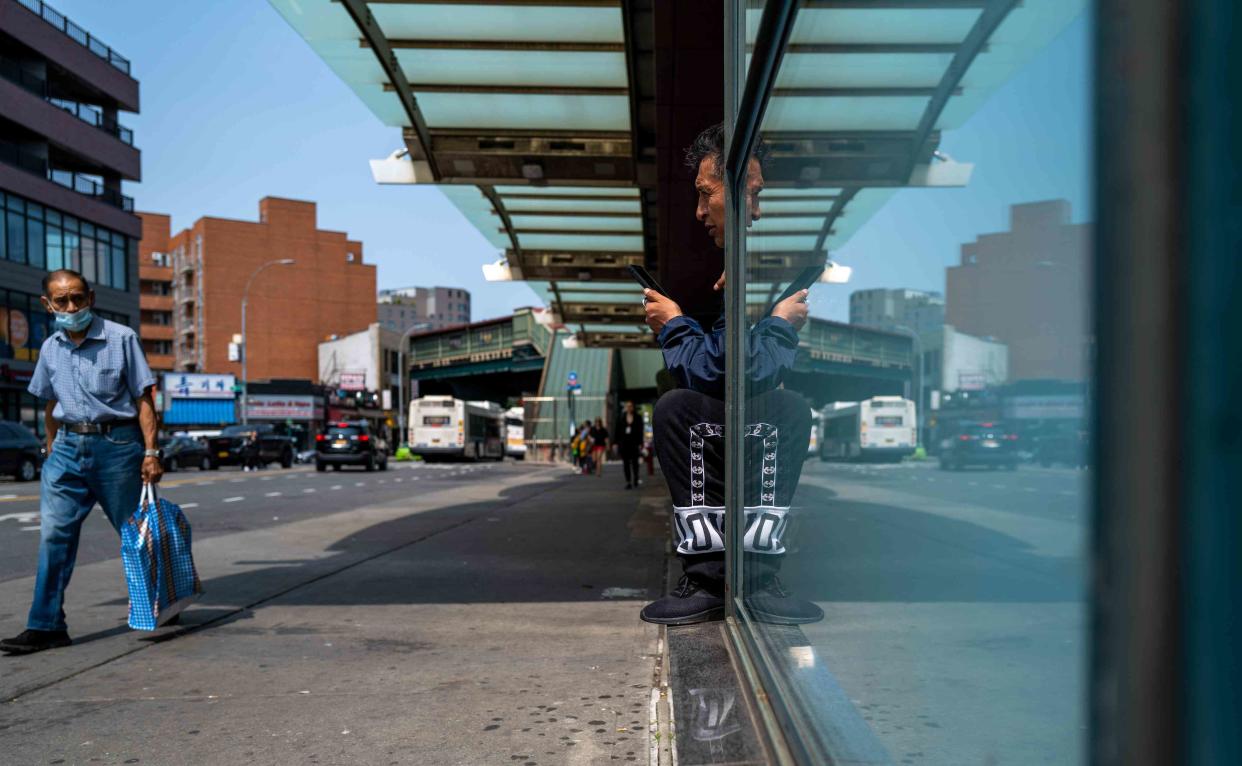COVID Cases Are Rising Again. Is It Still Dangerous to Get Infected?

Spencer Platt / Getty Images
- Oops!Something went wrong.Please try again later.
Fact checked by Nick Blackmer
Key Takeaways
The U.S. is currently facing yet another surge of COVID-19 cases.
The majority of the population does have some immunity to the virus, so the levels of disease are much lower than they were during past surges and it no longer threatens to overwhelm the healthcare system.
New strains of COVID will continue to emerge, meaning the virus can shift at any moment, and long COVID remains a risk for anyone who contracts the virus.
COVID-19 cases are rising again in the United States.
The Centers for Disease Control and Prevention (CDC) has stopped tracking infections as closely as earlier in the pandemic. However, available data show a 12.5% increase in weekly COVID hospitalizations in late July to 9,056.
COVID transmission rates and hospitalizations remain very low compared to major surges in the past, according to Brian Labus, PhD, MPH, an assistant professor of epidemiology and biostatistics at the University of Nevada, Las Vegas, School of Public Health.
We’re past the point of the pandemic where the virus overwhelms our healthcare system, Labus said. Anecdotally, many individuals who have caught COVID recently have reported milder symptoms and quicker recoveries, he added.
Although COVID is becoming a new normal, health experts are still concerned about waning immunity and persistent COVID symptoms.
Related: Do You Still Need to Hang on to Your COVID-19 Vaccine Card?
Is It Still Risky to Get Multiple COVID Infections?
Recent research indicates that immunity from a prior COVID infection provides strong protection against severe illness, according to Bernadette Boden-Albala, MPH, DrPH, the director and founding dean of the Program in Public Health at the University of California Irvine.
“Coupled with strong evidence that vaccines protect against severe outcomes as well, most of our communities have developed long-term immunity,” Boden-Albala told Verywell.
But while the risk of severe illness or death is much lower now for relatively healthy people, Boden-Albala said the risk is still significant for older adults, those with medical conditions such as diabetes or heart or lung disease, and people who are immunocompromised.
The emergency of a new COVID strain can happen anytime, Boden-Albala warned. The usual safety protocols should still apply: Getting booster shots, practicing proper hand hygiene, masking in crowded areas, and staying home when sick.
Labus said COVID immunity tends to be short-lived, which might explain recurrent infections.
“Even multiple infections won’t result in a life-long immunity like we get from chickenpox or measles,” Labus said. “New strains of COVID will continue to emerge, but it mutates very differently than the flu, which can make a drastic shift overnight.”
Related: How Long Does COVID-19 Stay In Your Body?
What About Long COVID Risks?
For most healthy people, the greatest risk associated with a COVID infection these days is long COVID. Among U.S. adults who have ever had COVID, nearly 11% are still experiencing long COVID, according to a survey conducted by the Census Bureau and National Center for Health Statistics.
People with long COVID can have a wide range of symptoms that can persist for months or even years after infection. Some of the most commonly reported symptoms include fatigue that interferes with daily activities, shortness of breath, and brain fog, among others.
The National Institutes of Health recently launched clinical trials to test four potential treatments for long COVID, including using the antiviral Paxlovid for a longer duration and drugs that can promote wakefulness.
“It’s hard to say what long COVID means for someone five or 10 or 20 years down the road because we just have not had that experience yet,” Labus said. “We will continue to study this disease for decades to come to really understand what it means. We do know that the best way to avoid long COVID is to avoid COVID in the first place.”
Read Next: Low-Dose Naltrexone Could Treat Long COVID Symptoms
What This Means For You
While the risk of severe illness or death from COVID is relatively low for healthy individuals, long COVID is still poorly understood. New strains of COVID will also continue to emerge—meaning the virus and its severity can shift at any moment. Experts say it’s a good idea to take similar pandemic precautions, such as getting the booster vaccine, practicing proper hand hygiene, masking in crowded areas, and staying home when feeling sick.
The information in this article is current as of the date listed, which means newer information may be available when you read this. For the most recent updates on COVID-19, visit our coronavirus news page.

